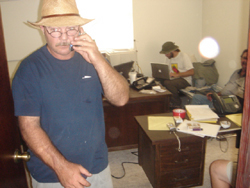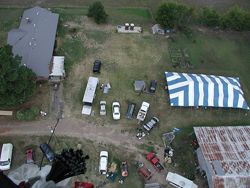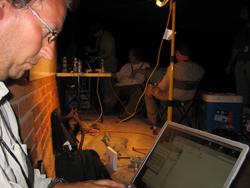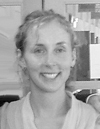
|
|
A Response to Katrina from Chicago's Center for Neighborhood Technology
People everywhere were glued to their radios or TV sets or computers—listening to, watching for, and reading about the unfolding devastation following Hurricane Katrina. The unimaginable horrors drove many to question: what can I do to help? Two members of the Center for Neighborhood Technology’s (CNT) Wireless Community Network (WCN) project team led one effort out of Chicago. Paul Smith, WCN Technology Director, and Rogers Wilson III, Network Technician for the North Lawndale WCN, realized that their experience building, deploying, and maintaining CNT’s demonstration wireless community networks could be transferred to the Gulf region to connect evacuees and first responders with communication tools—computers, Internet connectivity, Voice over Internet Protocol (VoIP) phones, and technical assistance. After coordinated planning with other community wireless groups and the Wireless Internet Service Providers (WISP) group convened by an FCC-sanctioned affiliate, Paul and Rogers packed up a van, donated by CNT staffers Karen Hobbs and Peter Haas, with wireless cards, repeater nodes, antennas, laptops, tools and more.  Mac Dearman and volunteers set up shop  Dearman Home Base Camp Phone lines were damaged and broadband scarce, so wireless systems provided a low-cost and mobile solution to multiple challenges. The expertise garnered in work with wireless community networks in low income communities in Illinois—Pilsen and North Lawndale in the City of Chicago, Northeast neighborhood in Elgin, and West Frankfort—served Paul and Rogers well as they assisted with the connection of shelters and the training of people residing there.  Paul Smith and other volunteers work through the night to setup wireless networks The team of volunteers is continuing to grow, as some new volunteers replace others who need to go home for a spell. The great need is for communications resources, training, and support—and the work continues and will continue. Updates are available through Radio Response, the group of IT professionals founded by Mac Dearman, and CNT's Wireless Community Network Project. 
Hyperlinks references in this article: Comments
|